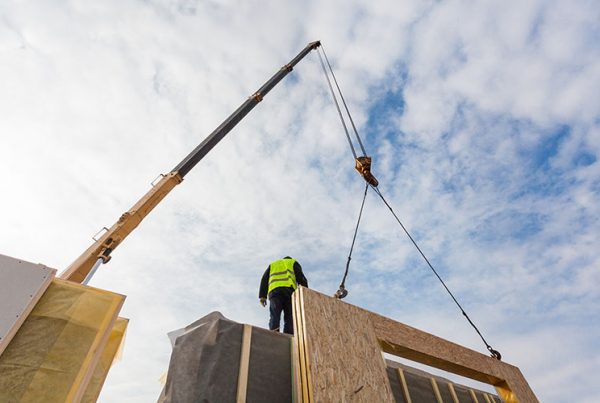Not so much a Policy Imperative as a Crisis…Modular Construction has the Answers
Best estimates are nearly 250,000 people left London during the COVID lockdown to live in their second homes, seeking comfort in a pale view of the hills or the slopping of the sea (or, in Dominic Cummings’ case, the car park at Barnard Castle). And some of them, perhaps looking for a third home, spent the idle hours rootling around the Internet looking for property bargains, with real estate prices slumping in the UK by 10% in May alone (they’ve rallied since, thanks to a new Stamp Duty regime). So what’s wrong with this picture? Well, for at least the last thirty years the UK, and London in particular, has been cursed by a shortage of new homes: housing lists have never been longer, rents have never been higher and houses and flats never more expensive than they are now. The UK also has steeply rising rates of eviction, radically increased homelessness and a new generation of millennials who are resigned to sleep on a friend’s sofa or face the prospect of living with their parents into their forties.
Being locked in during the lockdown was no picnic for any of us, but spare a thought for how hard it hit the homeless and those living in overcrowded flats with children climbing up the walls and no garden to escape to. Spare a thought for those who were safe and secure in March, only to emerge from the lockdown with no job and the imminent arrival of eviction papers. These are real issues facing real people every day. We can’t all escape to the hills and the seaside…
And the United Kingdom certainly isn’t alone in all this: India to is facing an acute housing shortage and in the United States (the richest country in the world, lest we forget) no less than 567,715 people are homeless: that’s seventeen in every ten thousand.
So what’s to be done?
First of all, let’s express the issue with a little more clarity: current housing policy, not just in the United Kingdom but across the globe, has so far been driven by a series of policy imperatives designed (unsurprisingly) to make builders build: low-interest rates, soft planning protocols, minimum regulatory thresholds and (at least until 2008) liberal financing structures. All of them working to the advantage of investors in real estate and existing homeowners: supporting the stock of existing housing wealth, but doing little or nothing to create new, low cost and environmentally friendly homes for those with more pressing housing needs: Stamp Duty reforms are no kind of answer.
And as part of this increasingly polarised dialogue, excessively high front-end construction costs are often (indeed usually) cited as a driving factor. Building new homes on conventional models is expensive, and governments are reluctant to invest directly in new programmes: so even though local authorities in the United Kingdom can now borrow to build, for decades now they have received virtually nothing from Central Government towards funding affordable housing programmes.
But it doesn’t have to be that way…
The technology already exists to create new homes at volume and at pace, not only with lower front-end costs but lower costs across the board: and with significantly more environmentally friendly outcomes too. Modular Construction allows units to be created off-site in controlled conditions, with delivery rates three times as fast as traditional methodologies, lower development costs and optimal quality. So its no wonder the McKinsey Global Institute reported this year that Modular Construction in European and the US Markets will be worth $130bn by 2030. Not only is it quicker, less expensive and more efficient, but it plugs directly into the pressing needs of our troubled planet: providing a workable platform capable of meeting burgeoning housing needs across the globe.
We might not all end up with second homes with a pale view of the hills, but there might be a better chance of all of us having a home.

Modulex Construction is the World’s largest Steel Modular Building Company. It was established by Red Ribbon to harness the full potential of these fast-evolving technologies and deliver at pace to meet the evolving needs of the community
Executive Overview
I’m acutely conscious that all across the globe we’re facing a dire shortage of domestic housing, and increasingly aware that existing housing policies no longer providing any of the answers. We need a paradigm shift to meet what could otherwise be a looming crisis.
That’s why I’m convinced modular construction will be so important: it delivers at the pace we need, working off low-cost platforms and with quality assurance levels conventional construction technologies simply can’t match.






Leave a Reply